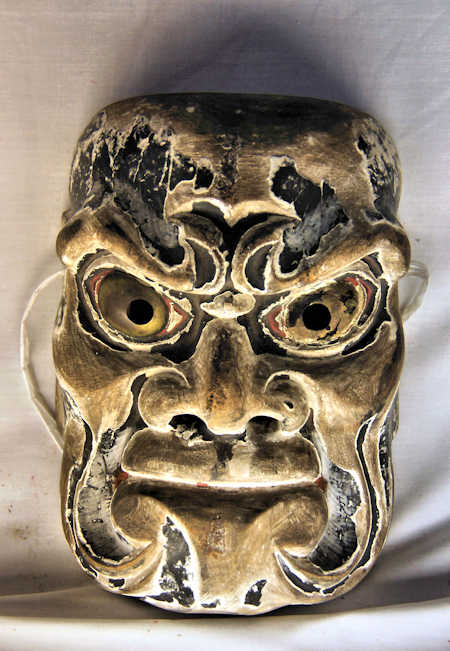One of the things I am always on the lookout for in my wanderings in the back country of Japan, are masks. Being a mask-maker myself, though admittedly somewhat lapsed, I look for the unusual and diverse that can inform my own masks.....
At Hirakiki Shrine in the far south of Kagoshima Prefecture I hit paydirt. They had 24 old wooden masks on display. In a back room I also saw a collection of newer masks that the priest let me in to view, but today here are some of the old ones.
I wish I had talked with the priest more, but what I have been able to find out is that the masks were worn for Kanmai, which translates as "god dance"... they don't use the word kagura. There used to be a lot more dances performed, but some still are, in October.
Traditions in this part of Japan were usually somewhat different from mainstream Japan.
I'm sorry I didn't ask about the names of the masks....
Need to get back there and do some research..... one of these days.....

































































